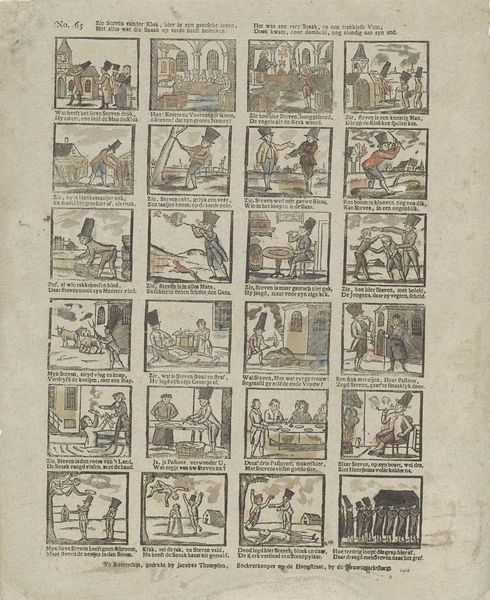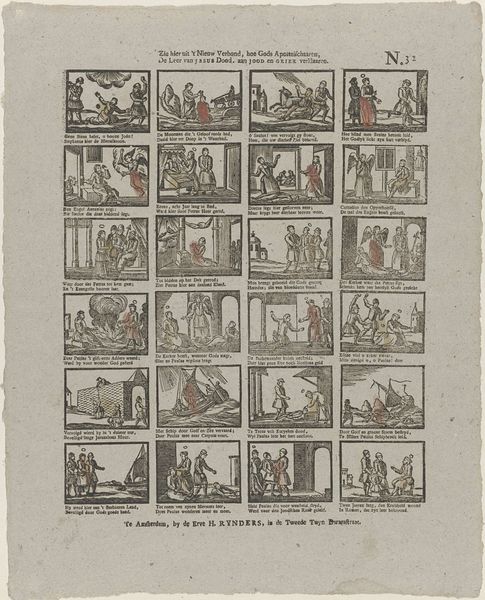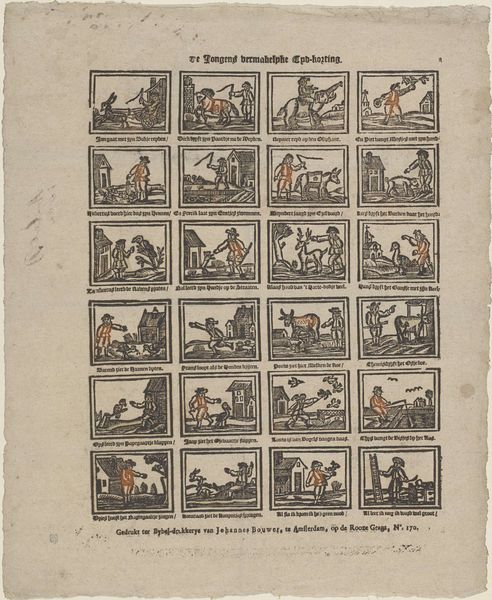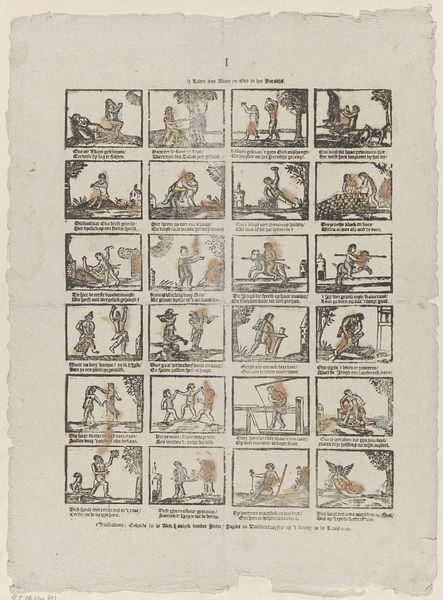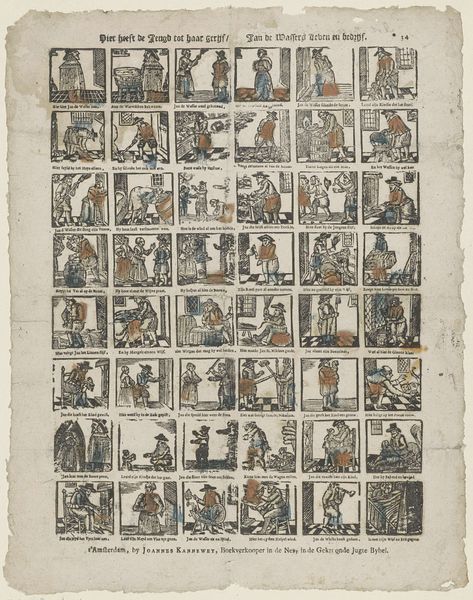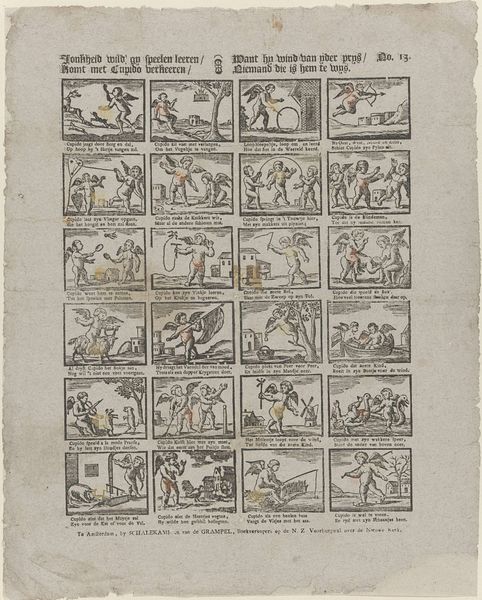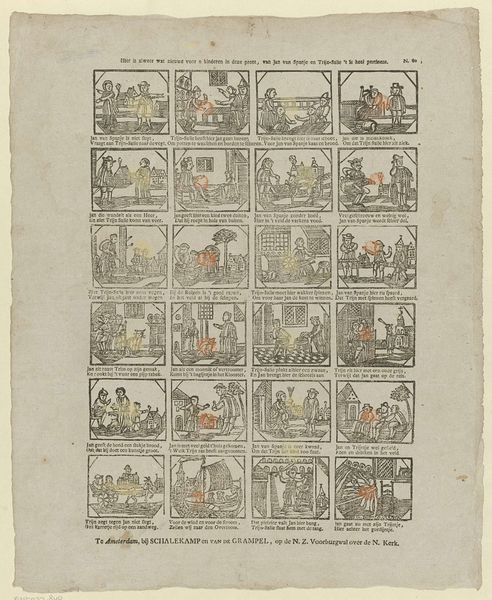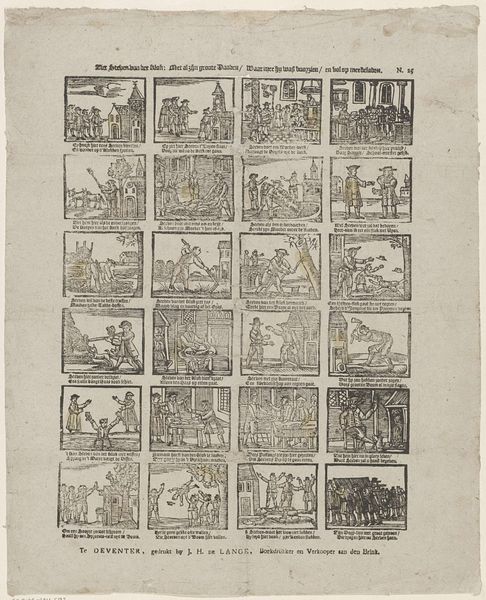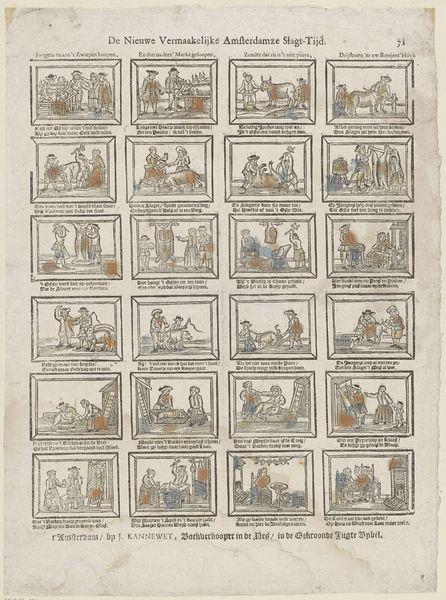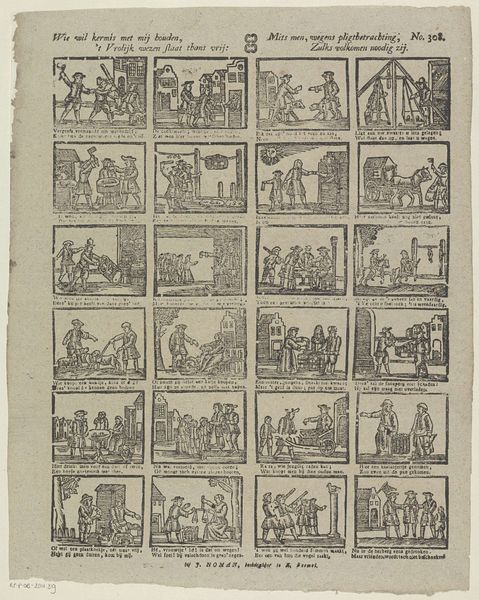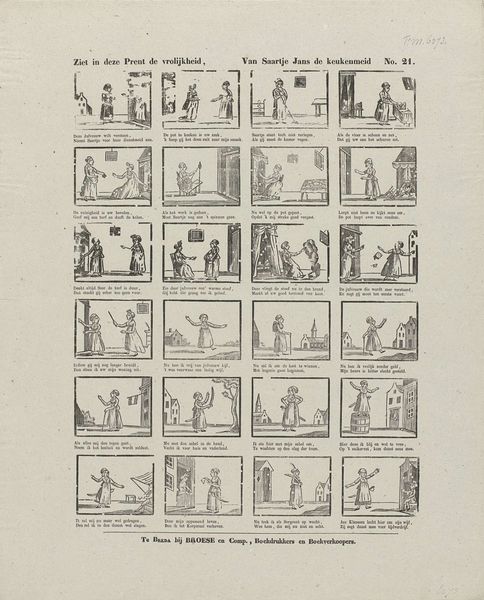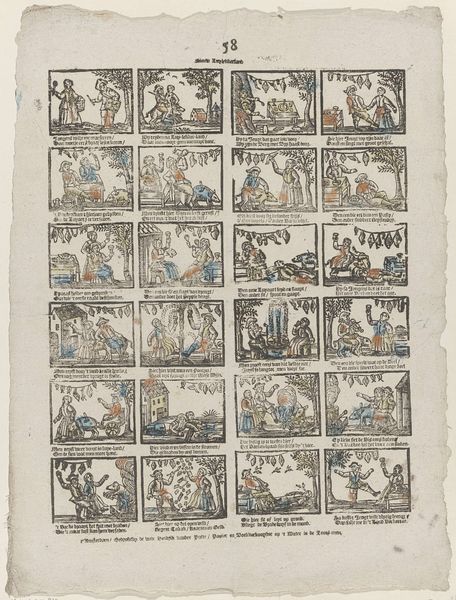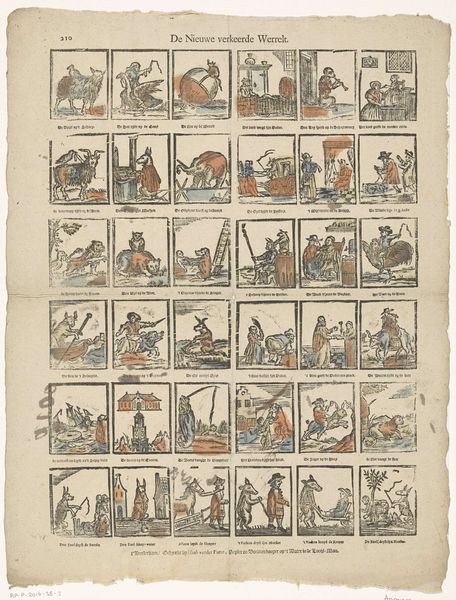
graphic-art, print, woodcut, engraving
#
graphic-art
#
narrative-art
# print
#
ukiyo-e
#
figuration
#
folk-art
#
woodcut
#
genre-painting
#
engraving
Dimensions: height 396 mm, width 333 mm
Copyright: Rijks Museum: Open Domain
Curator: Alright, let's dive into this fascinating print. We're looking at "Deel ambachten by malkaar / En spreekwoorden te gaar" created between 1791 and 1812. The artist is Jacobus Thompson. It's a wonderfully detailed woodcut and engraving piece held in the Rijksmuseum collection. Editor: My immediate impression is of a storybook page, almost like a precursor to comics. These little vignettes, the crisp lines... it's like peering into tiny worlds filled with activity, if slightly grim activity I must add. Curator: Yes! Think of it as a visual encyclopedia of sorts. Thompson's work falls into a broader tradition of using prints for popular education and entertainment. These squares depict different trades and proverbs, offering a snapshot of Dutch society at the turn of the 19th century. Editor: So, less about aesthetic beauty and more about conveying a message to the public. Makes you think about the role art played then compared to today. Were people getting their daily dose of moral guidance alongside a depiction of local news? Curator: Precisely! It was about instruction, social commentary, even a little gossip, perhaps. Look at the expressions on the faces, the specific tools used. This print wasn’t just passively viewed; it sparked conversation and reinforced values within communities. We often forget that art could act as newspapers. Editor: That's an important point. We tend to view historical artwork through this lens of the "high art" paradigm. But, the impact this had on its intended audience is so vital to recall; the circulation of common sense is much different when printed in mass and left for personal contemplation. The social sphere in which it occurs creates meaning on multiple different planes. Curator: It's humbling, isn't it? To realize art wasn't always about grand pronouncements, or the musing of the isolated, tortured artist. Sometimes, it was simply about bringing the shared reality of the neighborhood into view. Editor: So well put. This gives us not just a glimpse into professions and how these trades affected daily routines, but reminds us of art's ever-shifting position in civic life. Curator: Exactly. That shift helps redefine art's capacity to teach and share collective experience.
Comments
No comments
Be the first to comment and join the conversation on the ultimate creative platform.
